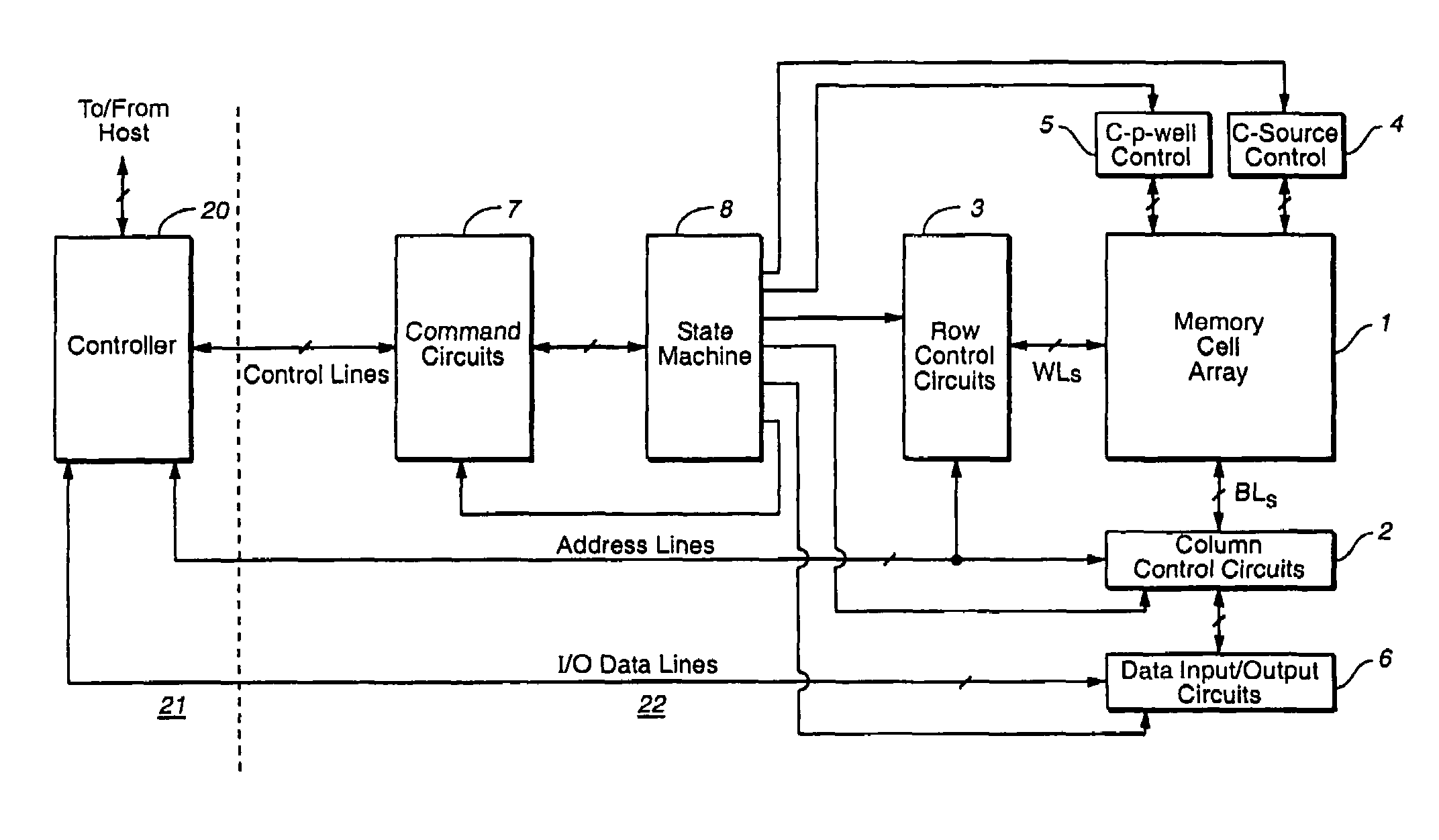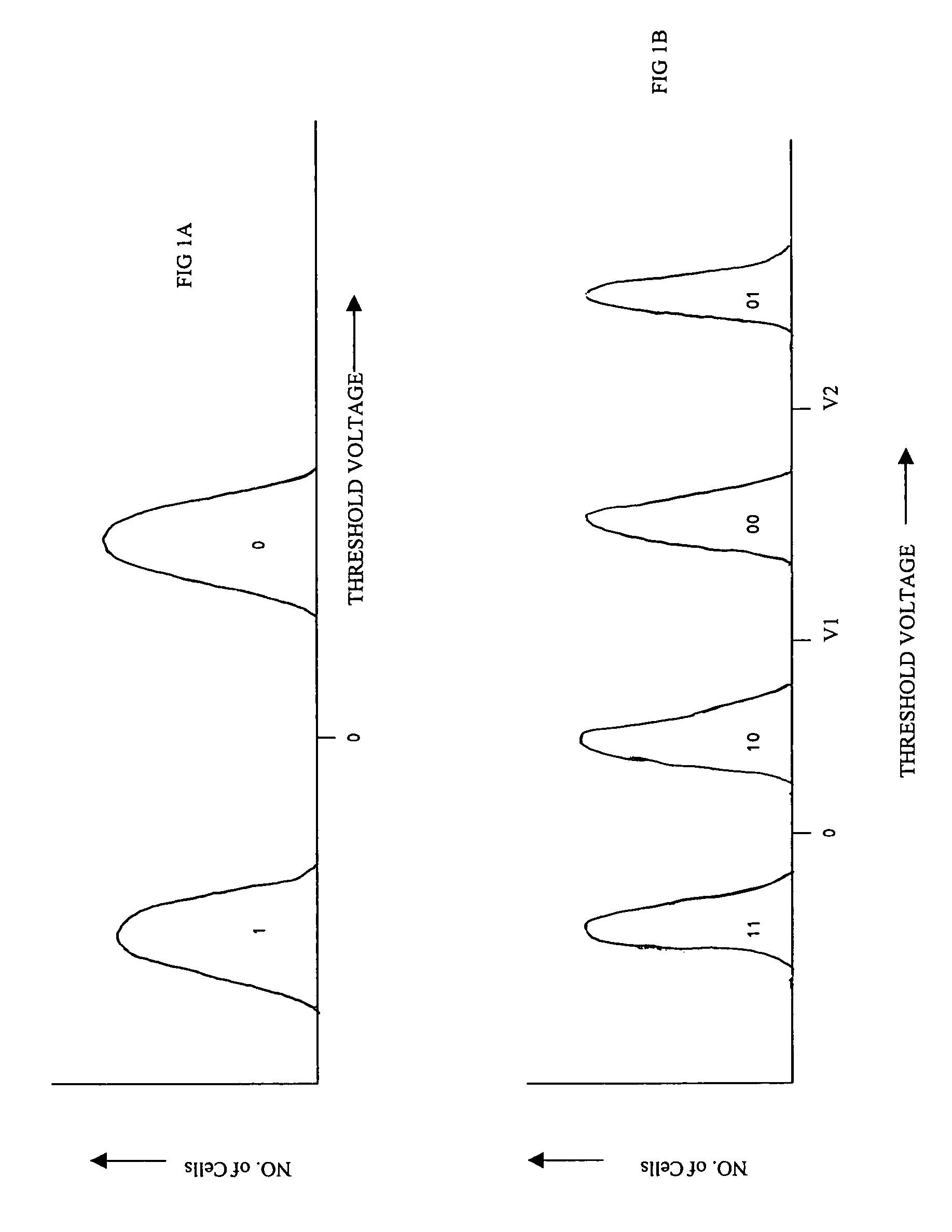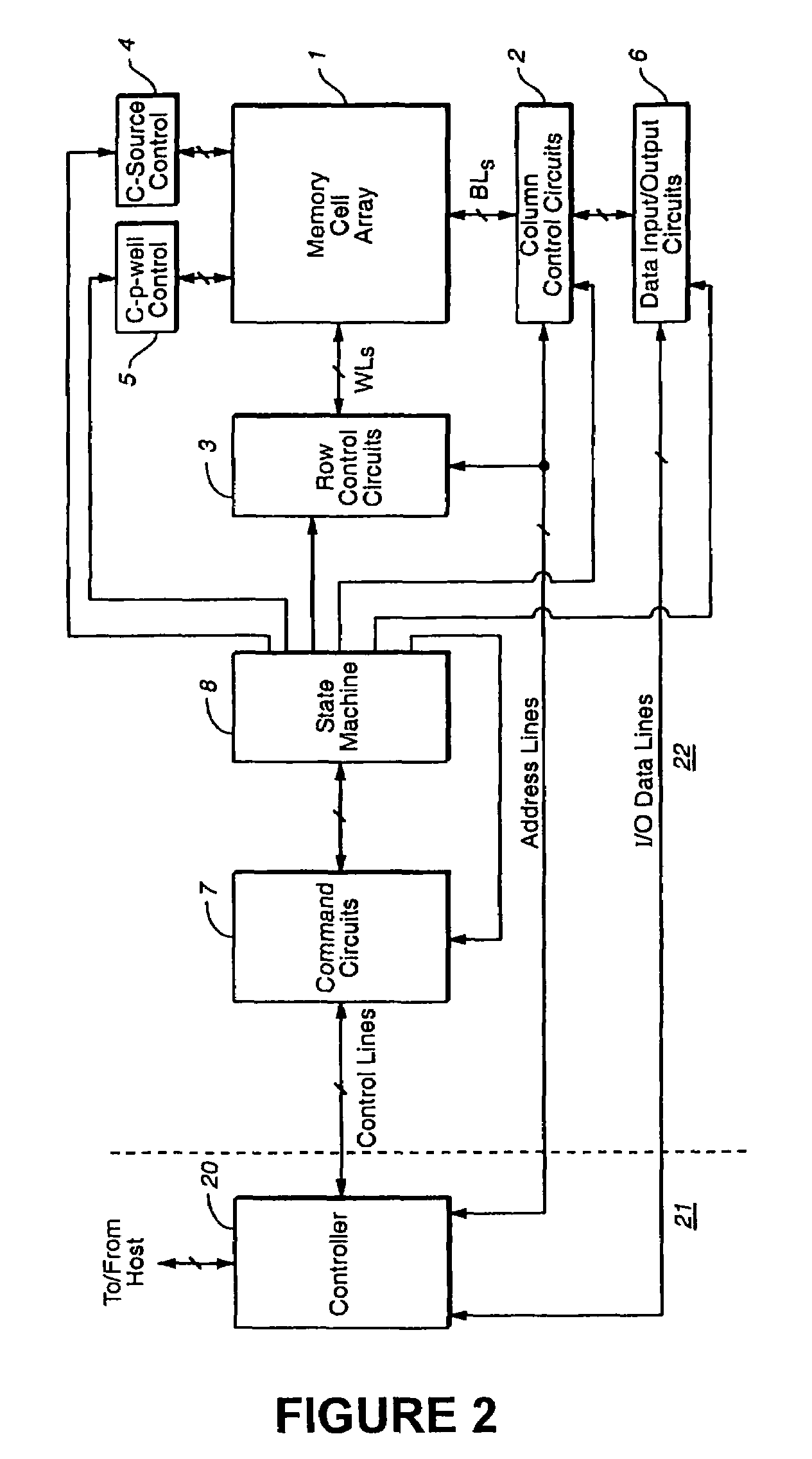Method of avoiding errors in flash memory
a flash memory and error prevention technology, applied in the field of flash memory storage systems, can solve the problems of low data retention time quality specification of mbc cells, lower reliability of mbc than sbc, and low performance of mb
- Summary
- Abstract
- Description
- Claims
- Application Information
AI Technical Summary
Benefits of technology
Problems solved by technology
Method used
Image
Examples
Embodiment Construction
[0053]The present invention is a multi-bit-per-cell flash memory storage device that reduces the effects of PD errors, and the method by which the device reduces the effect of PD errors. The reduction of PD errors is achieved by making the cells' default all-one state a middle state along the threshold voltage axis, instead of the leftmost state as in prior art devices.
[0054]The principles and operation of a multi-bit-per-cell flash memory according to the present invention may be better understood with reference to the drawings and the accompanying description.
[0055]In the context of the example of FIG. 1B, a flash memory device of the present invention does not have the value of “11” represented by the leftmost state but for example by the third-from-the-left state. Thus the order of the states from left to right is not {“11”, “10”, “00”, “01”} as in FIG. 1B, but may be for example {“00”, “01”, “11”, “10”}. In this case, cells which are to contain values of “11”, which as we indic...
PUM
 Login to View More
Login to View More Abstract
Description
Claims
Application Information
 Login to View More
Login to View More - R&D
- Intellectual Property
- Life Sciences
- Materials
- Tech Scout
- Unparalleled Data Quality
- Higher Quality Content
- 60% Fewer Hallucinations
Browse by: Latest US Patents, China's latest patents, Technical Efficacy Thesaurus, Application Domain, Technology Topic, Popular Technical Reports.
© 2025 PatSnap. All rights reserved.Legal|Privacy policy|Modern Slavery Act Transparency Statement|Sitemap|About US| Contact US: help@patsnap.com



